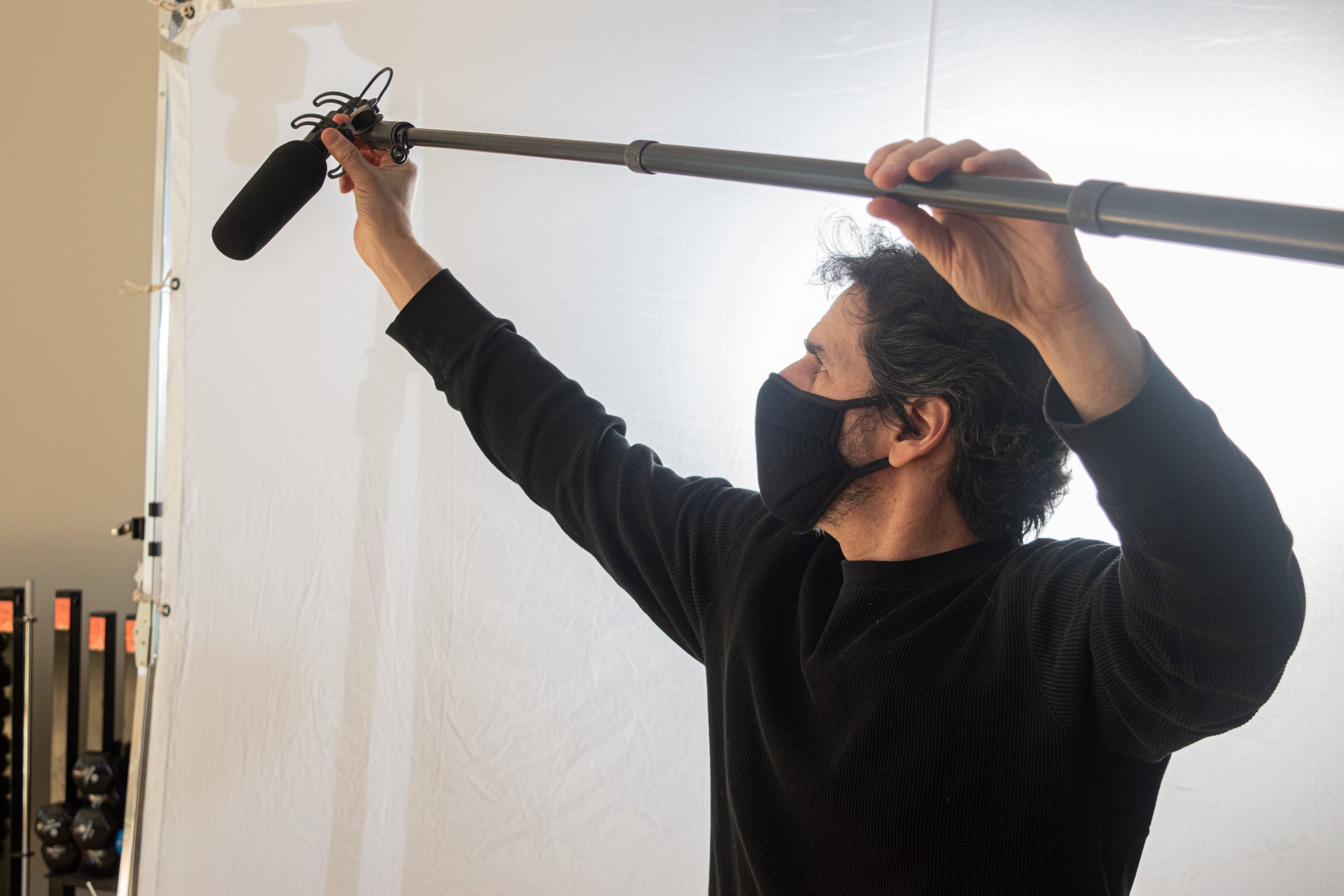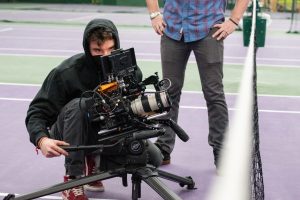Serving Up Success: Crafting a Compelling Sponsorship Video Series with Tennis Pro Charlie Maher
Charlie Maher, a remarkable tennis athlete defying the limits of age and athleticism, wanted to share his inspiring journey with the world.
Collaborating with Skillman Video Group (SVG), they embarked on a project to create a sponsorship video series that delves deep into Charlie’s training regimen and dedication.
Having already created a powerful PR video for Charlie, this series provided an intimate look at Maher’s rigorous training regimen and unwavering dedication.
Discover the phases of this meticulous process, from the assembly cut to the final review, and how SVG’s attention to detail and creative approach brought Charlie’s story to life.
Table of Contents
Beyond the Baseline: A New Kind of Video Series
This wasn’t just another highlight reel. Charlie wanted to delve deeper, giving his followers an inside look at the specific steps he takes to maintain peak performance despite his age.
SVG, known for their innovative approach to video production, was up for the challenge.
This time, the focus was on creating an instructional, “training walk-through” style video, offering a unique perspective on the athlete’s process.
Phase 1: The Assembly Cut – A Blind Audition for the Narrative
The first step in SVG’s meticulous editing process is the assembly cut.
This raw, unpolished version of the video serves as a foundation for client feedback. However, there’s a twist: SVG’s CEO and Creative Director, Christina Skillman, prefers that clients experience this initial cut with their eyes closed.
Why the blindfold? Christina believes it allows clients to focus solely on the narrative, the story being told through audio and dialogue.
By eliminating visual distractions like jump cuts and uncolored footage, clients can provide more authentic and insightful feedback.
Phase 2: B-Roll Takes Center Stage – The Storyteller’s Secret Weapon
In most videos, B-roll is supplementary footage that enhances the main narrative. But for Charlie’s training series, the B-roll was the narrative.
The videos followed him through his rigorous routine, capturing his on-court drills, footwork exercises, and gym workouts.
Audio recorded during these sessions provided the voiceover, creating a truly immersive experience for viewers.
This unique approach allowed SVG to showcase Charlie’s dedication and passion for his sport in a way that words alone could never capture.
Phase 3: Color Grading – Adding Depth and Vibrancy
Once the B-roll was assembled and approved by Charlie, SVG moved on to color grading.
This crucial step elevates the visual appeal of the video, enhancing its emotional impact and overall aesthetic.
For Charlie’s series, the color grading was particularly important, as it helped to convey the energy, vibrancy, and intensity of his training regimen.
Phase 4: Audio Mixing – Capturing the Raw Energy

Unlike Charlie’s previous PR video, this project didn’t require additional sound effects.
SVG strategically placed a microphone under Charlie’s shirt, capturing the raw sounds of his movement, the tennis ball bouncing, and his own breathing.
This immersive audio experience transported viewers directly onto the court with Charlie, making them feel like they were part of his training journey.
Phase 5: Final Review – A Masterful Creation
The final stage of SVG’s editing process is the final review, where the client has the opportunity to provide feedback on the polished product.
Charlie was thrilled with the final videos, which captured his dedication and passion for tennis in a truly authentic way.
From raw footage to a masterful creation, Skillman Video Group’s meticulous editing process transformed Charlie Maher’s training journey into a compelling video series.
By focusing on authenticity, creativity, and attention to detail, SVG delivered a product that exceeded the client’s expectations and resonated with viewers.
The Videos
Tennis Specific Footwork to Reawaken Competitive Movement
Strength Training
Point Play vs 18 Year Old College Player
Let’s Partner Up and Explore the Boundaries of Aging through Pro Tennis
Frequently Asked Questions
What was the purpose of Charlie Maher’s video series?
The purpose of Charlie Maher’s video series was to share his inspiring journey and dedication to tennis, showcasing the specific steps he takes to maintain peak performance despite his age.
Unlike typical highlight reels, this series aimed to provide an inside look at his training regimen, offering viewers an immersive and instructional experience.
How did the assembly cut phase contribute to the narrative?
The assembly cut phase is crucial in SVG’s editing process.
This initial, raw version of the video serves as a foundation for client feedback. SVG’s CEO, Christina Skillman, prefers clients to watch this cut with their eyes closed, focusing solely on the narrative.
This unique approach allows clients to provide authentic feedback on the story being told through audio and dialogue, eliminating visual distractions.
Why was B-roll footage so important in Charlie’s video series?
In Charlie’s video series, B-roll footage was not just supplementary; it was the narrative.
The B-roll captured Charlie’s on-court drills, footwork exercises, and gym workouts, providing an immersive experience.
The audio recorded during these sessions served as the voiceover, showcasing his dedication and passion for tennis in a way that words alone could not convey.
What role did color grading play in the video series?
Color grading played a crucial role in enhancing the visual appeal of Charlie’s video series.
This step added depth, vibrancy, and intensity to the footage, conveying the energy and emotion of his training regimen.
The color grading helped to elevate the overall aesthetic and emotional impact of the videos, making them more engaging for viewers.
How did the final review phase ensure client satisfaction?
The final review phase allowed Charlie to provide feedback on the polished product.
This stage is essential for ensuring client satisfaction, as it offers an opportunity to make any necessary adjustments before the final release.
Charlie was thrilled with the final videos, which authentically captured his dedication and passion for tennis, exceeding his expectations and resonating with viewers.
Share:
Search our blog:
Follow us on:

